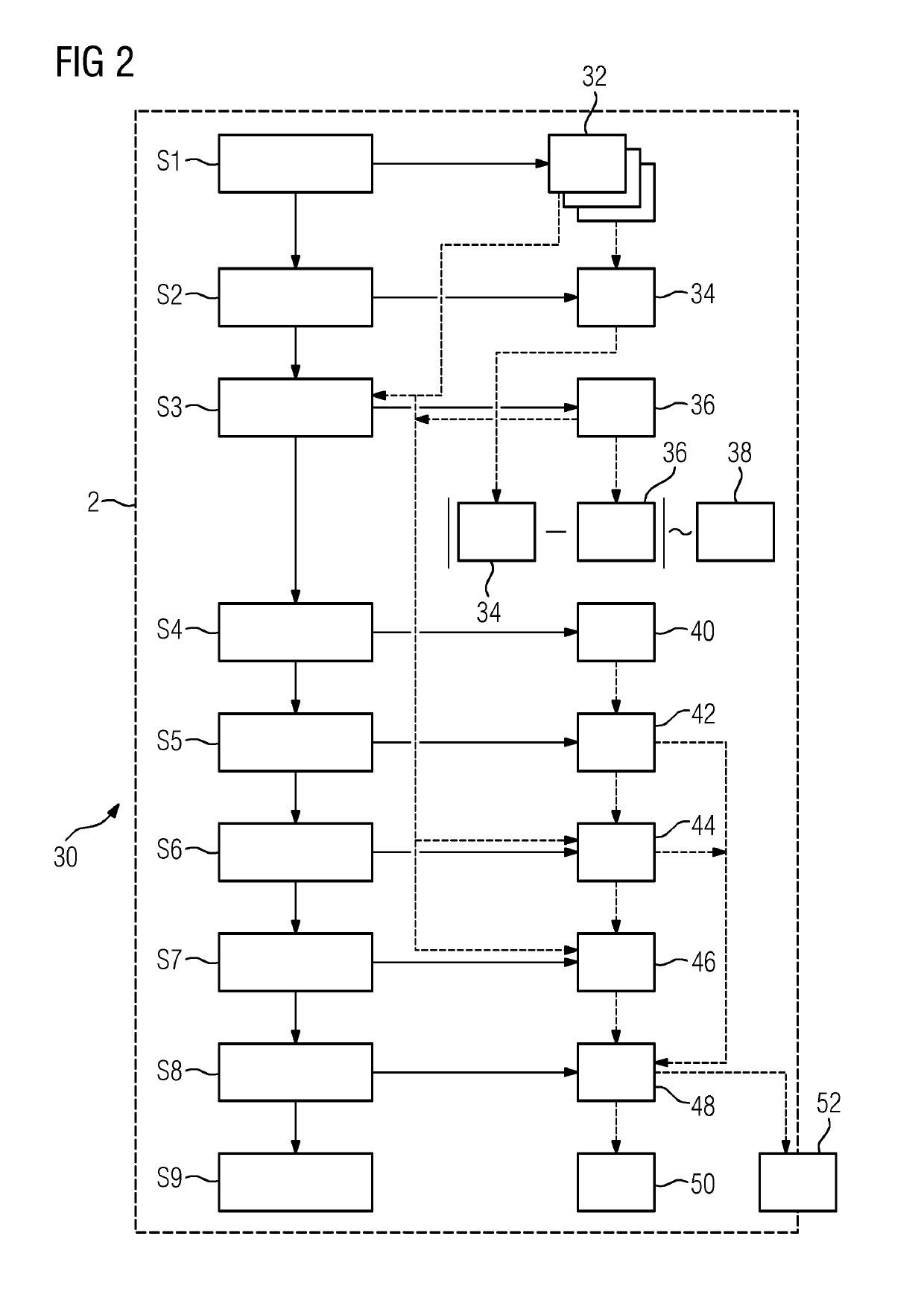Method for automatically generating a volume model of correction data for an x-ray based medical imaging device
a technology of medical imaging and volume model, applied in the field of automatic generation of volume model of correction data for x-ray based medical imaging device, can solve the problems of no longer being able to make meaningful statements, occurrence of zones with apparently higher or even lower absorption, and inhomogeneous tissue, so as to reduce the required storage capacity and reduce the effect of quality loss
- Summary
- Abstract
- Description
- Claims
- Application Information
AI Technical Summary
Benefits of technology
Problems solved by technology
Method used
Image
Examples
Embodiment Construction
[0028]FIG. 1 depicts a schematic cross-sectional view of an X-ray based medical imaging device 1 that is configured as a CT scanner 2. In the CT scanner 2, an X-ray source 4 irradiates a body region 10 of a patient positioned in the interior 6 of the rotating ring 8 of the CT with X-rays 12. The portions of the X-rays 12 that are not absorbed by the body region 10 of the patient are measured on the opposite side relative to the interior 6 of the X-ray source 4 by an X-ray detector 14 and processed to form an individual X-ray image. For complete imaging, different X-ray images are recorded. For the individual recordings, both the X-ray source 4 and the X-ray detector 14 rotate around an axis 16 perpendicular to the image plane. There may be an axial displacement of the X-ray source 4 and X-ray detector 14 along the axis 16. Both the X-ray source 4 and the X-ray detector 14 perform the movement of discretized coverage of a cylinder surface. The individual X-ray images are then transfe...
PUM
 Login to View More
Login to View More Abstract
Description
Claims
Application Information
 Login to View More
Login to View More - R&D
- Intellectual Property
- Life Sciences
- Materials
- Tech Scout
- Unparalleled Data Quality
- Higher Quality Content
- 60% Fewer Hallucinations
Browse by: Latest US Patents, China's latest patents, Technical Efficacy Thesaurus, Application Domain, Technology Topic, Popular Technical Reports.
© 2025 PatSnap. All rights reserved.Legal|Privacy policy|Modern Slavery Act Transparency Statement|Sitemap|About US| Contact US: help@patsnap.com


